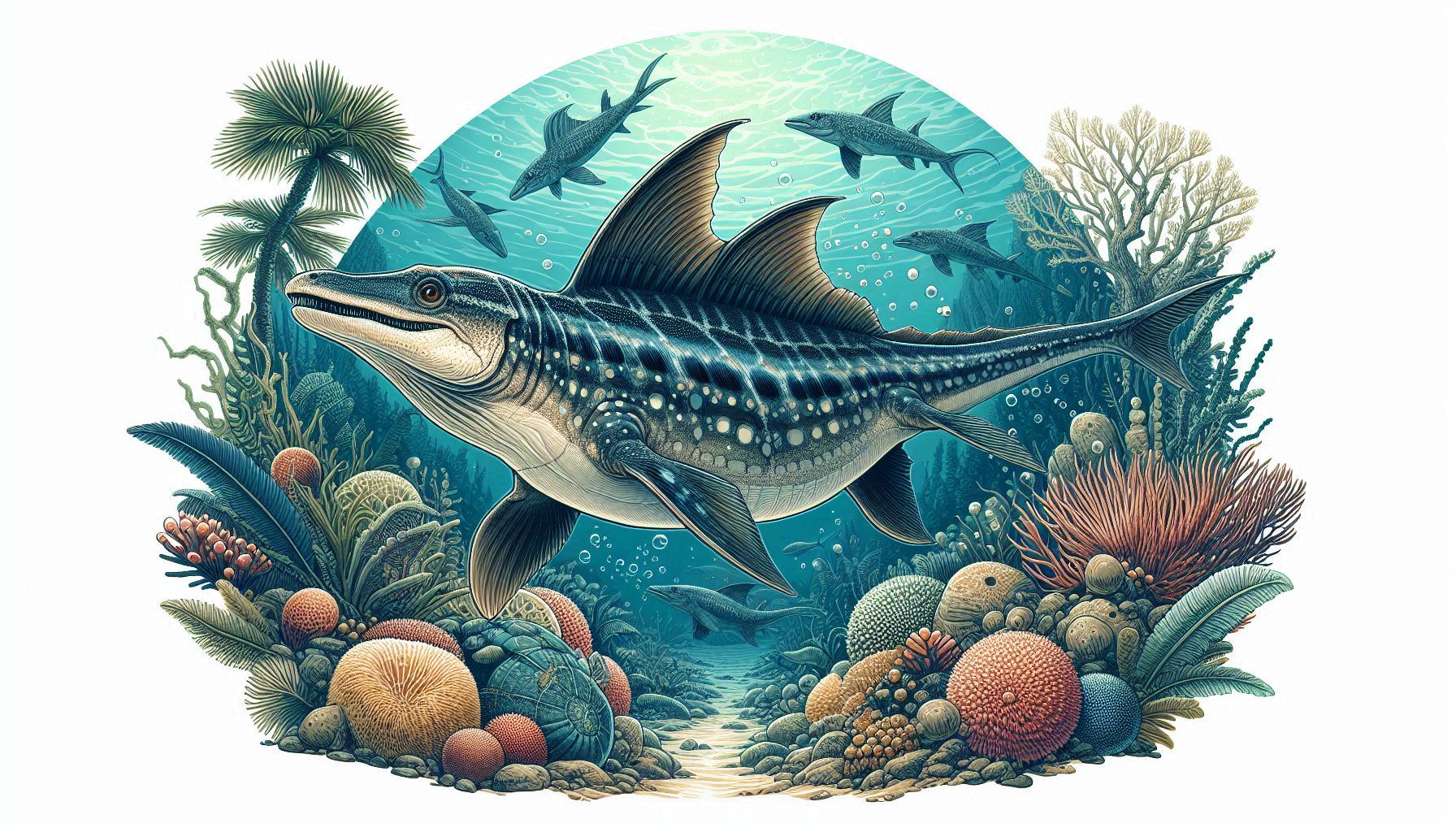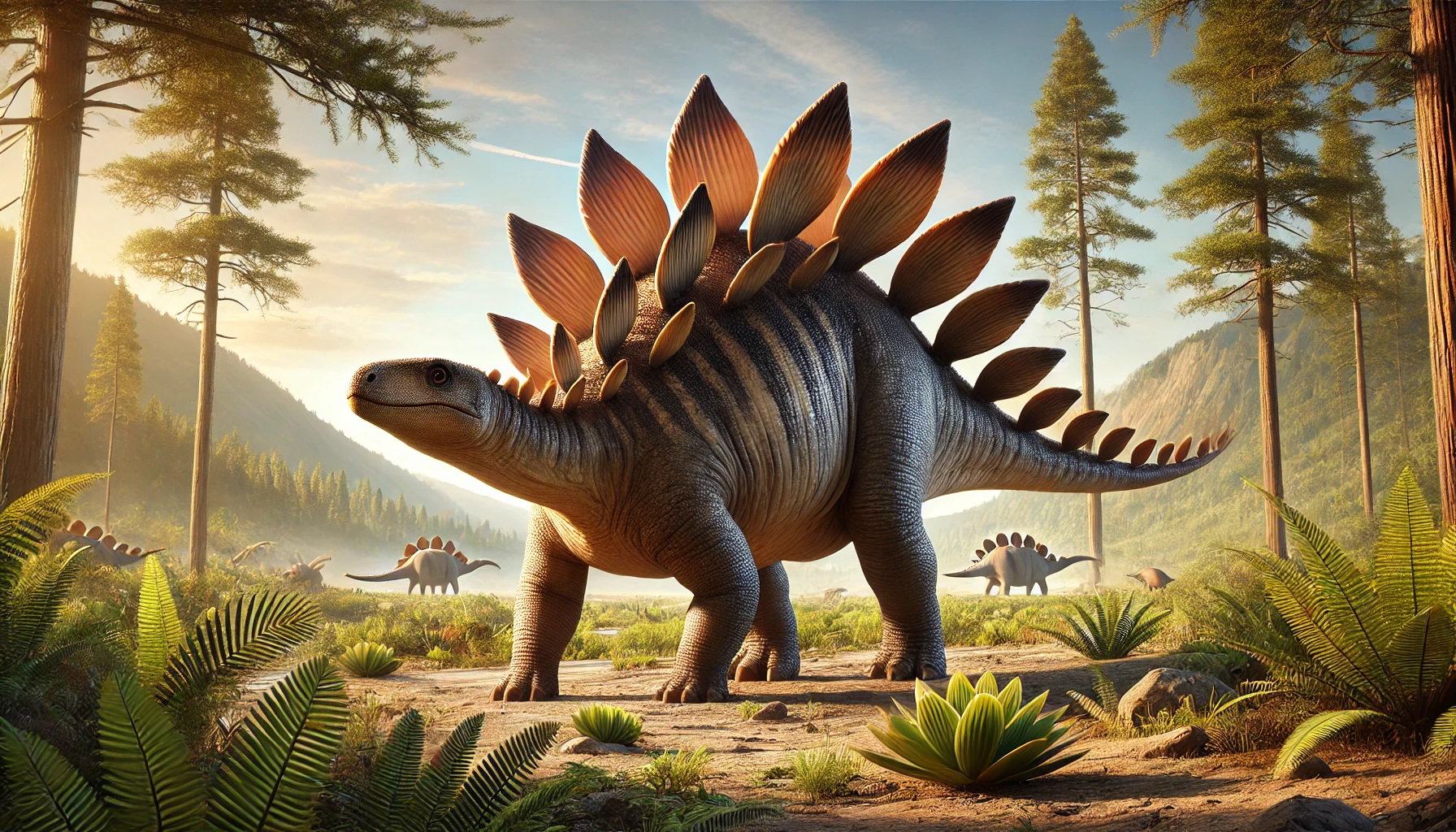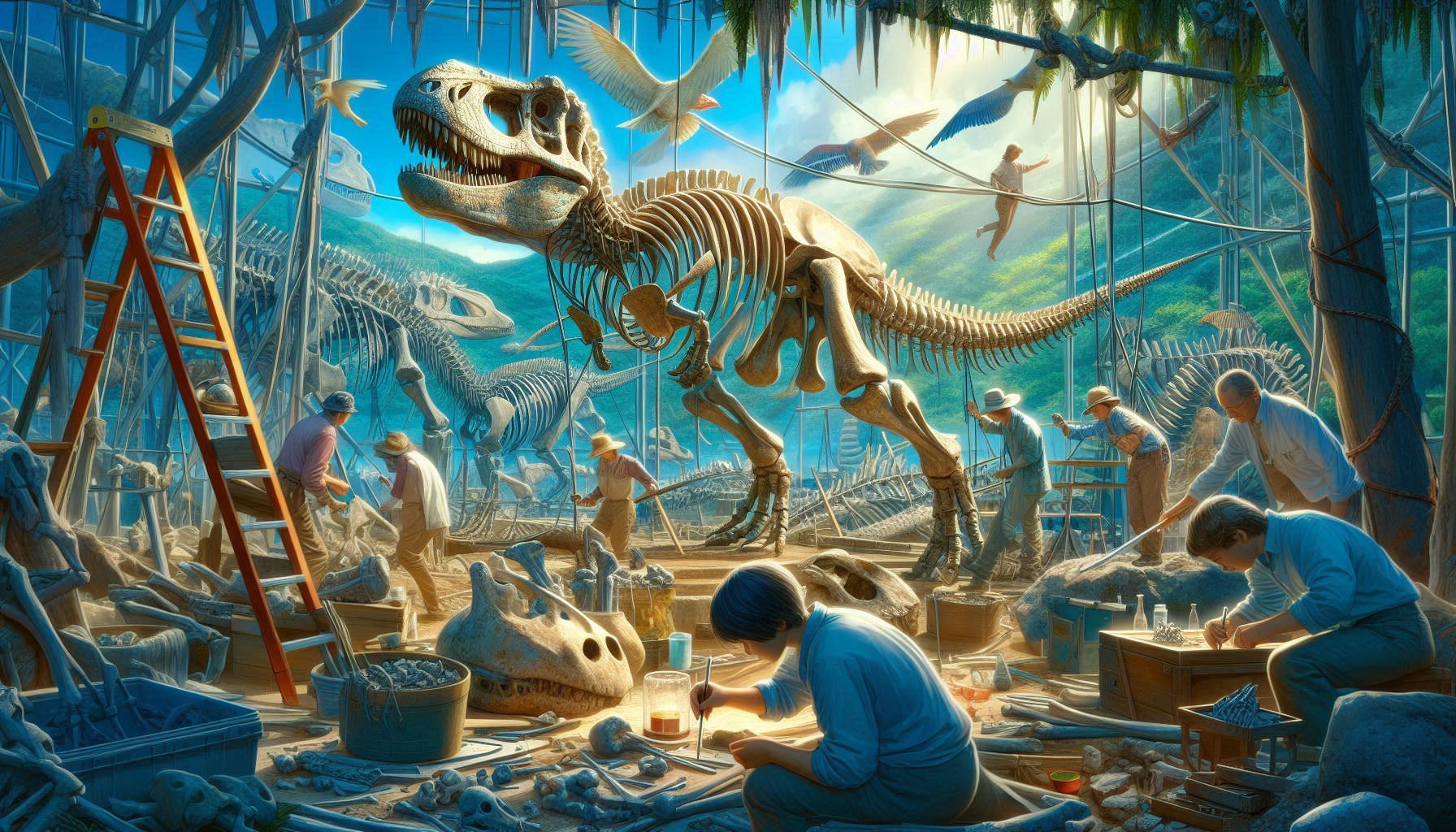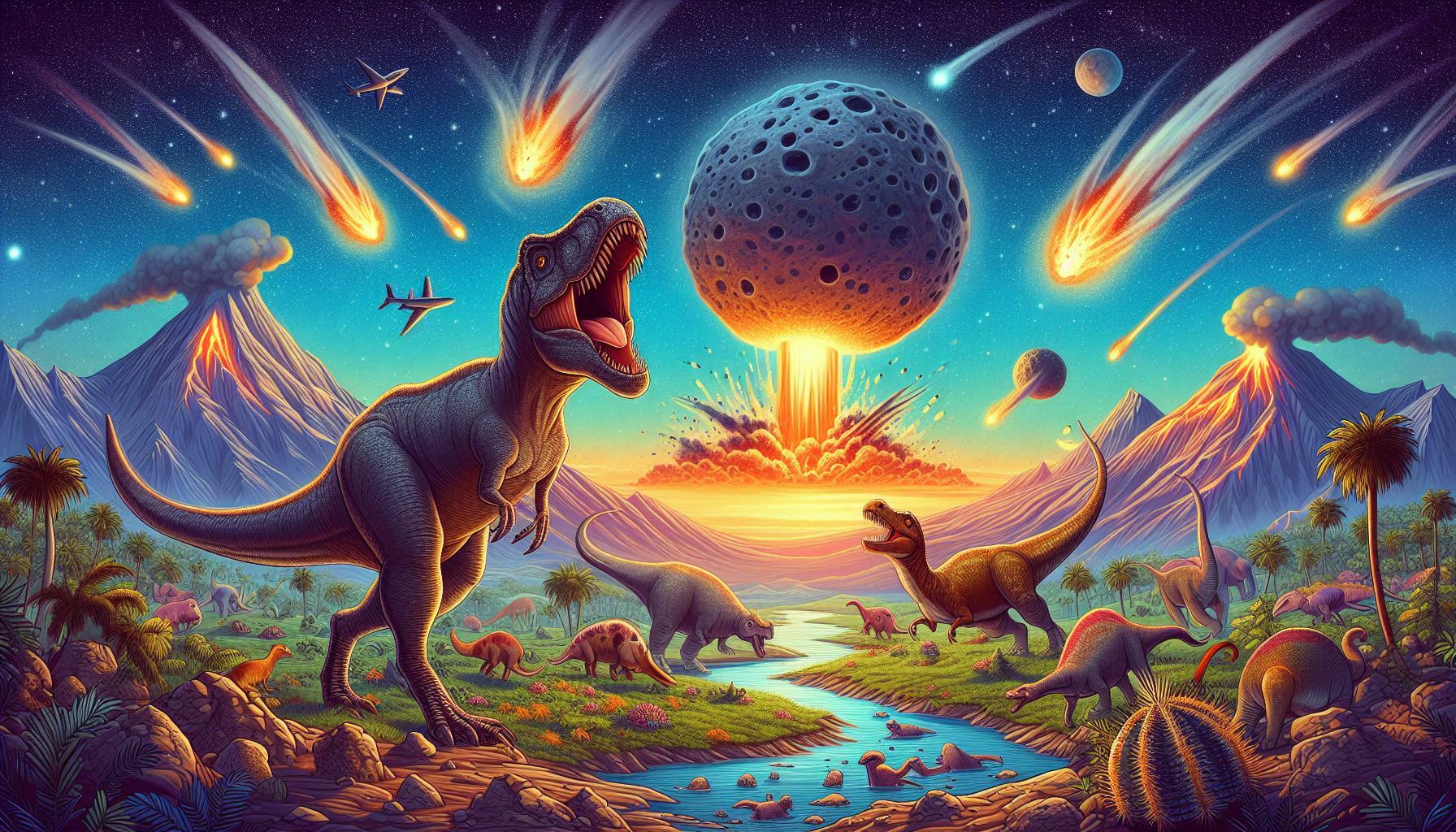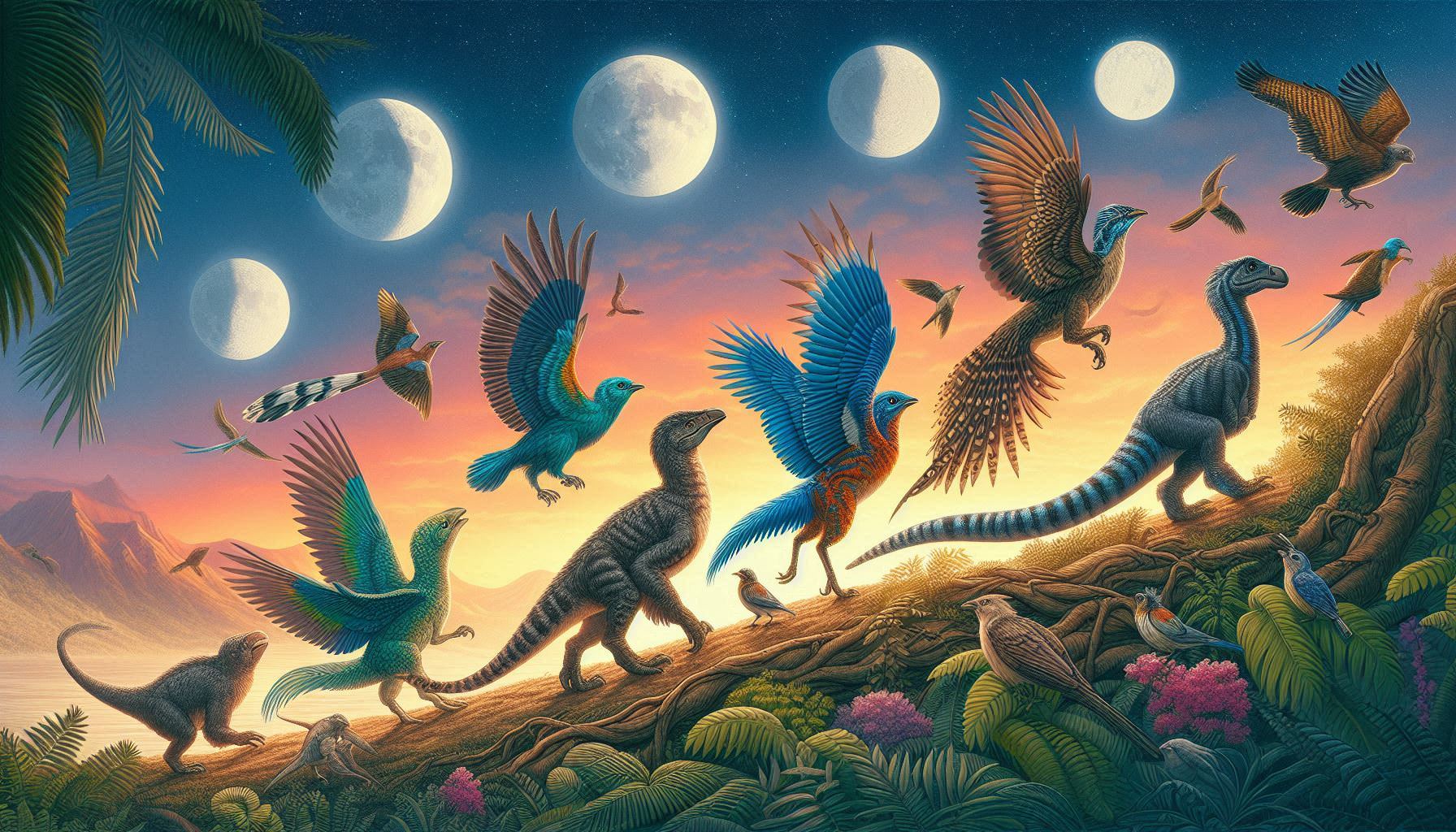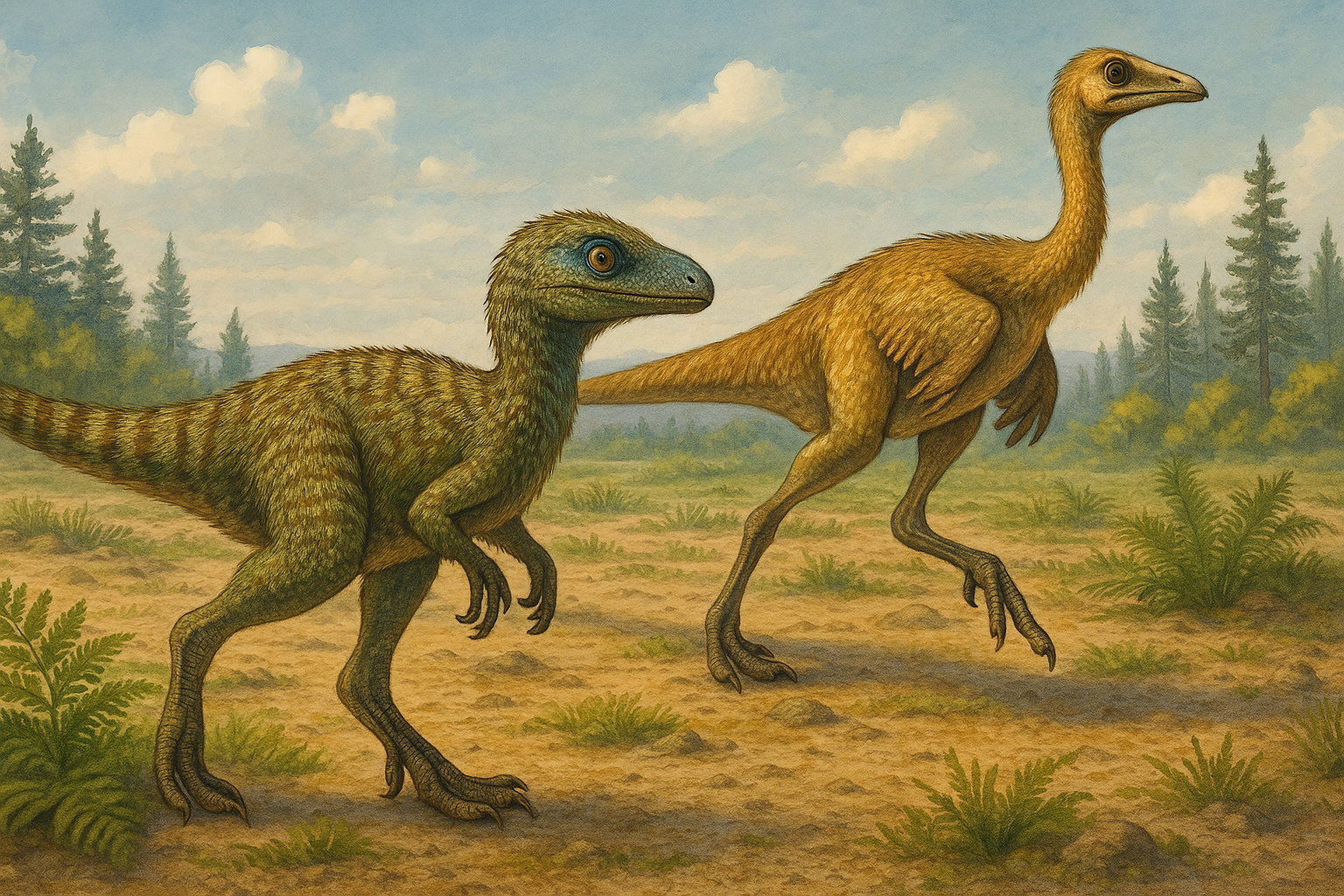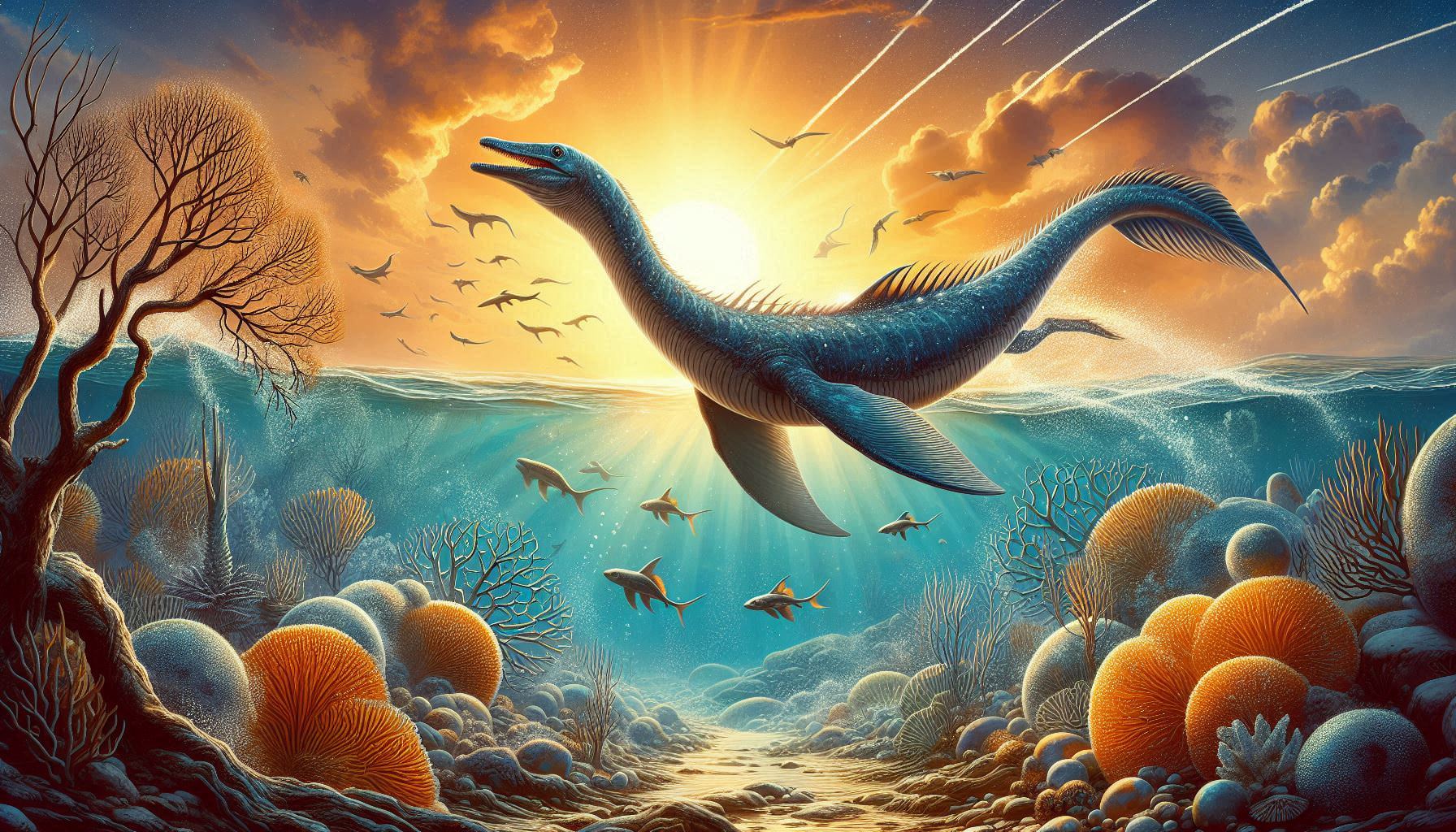Ichthyosaur may sound like a dinosaur, but this sleek marine predator carved out its own path through prehistoric history. With a body shape uncannily similar to modern dolphins, ichthyosaurs were not only among the first reptiles to return to the sea — they were some of the most successful. For over 150 million years, they swam the ancient oceans, hunting with speed, precision, and vision built for the deep.
- What Is an Ichthyosaur?
- What Did Ichthyosaurs Look Like?
- How Big Were Ichthyosaurs?
- What Did Ichthyosaurs Eat?
- Did Ichthyosaurs Lay Eggs?
- How Did Ichthyosaurs Swim?
- When and Where Were Ichthyosaurs Discovered?
- Why Did Ichthyosaurs Go Extinct?
- Why Are Ichthyosaurs Important?
- FAQ
- Was ichthyosaur a dinosaur?
- How big was the biggest ichthyosaur?
- Did ichthyosaurs lay eggs?
- Where have ichthyosaur fossils been found?
- When did ichthyosaurs live?
What Is an Ichthyosaur?
Ichthyosaurs (“fish lizards”) were marine reptiles that lived during the Mesozoic Era, from the Early Triassic (~250 million years ago) to the Late Cretaceous (~90 million years ago). Despite the name, they weren’t dinosaurs, fish, or even close relatives to modern reptiles. Instead, they were part of a unique evolutionary experiment — one that adapted land reptiles into fully aquatic hunters.
Their streamlined bodies, large eyes, and strong tails made them ideal oceanic predators, thriving in shallow coastal seas and open waters alike.
What Did Ichthyosaurs Look Like?
Ichthyosaurs evolved to resemble dolphins, sharks, and tuna — a classic case of convergent evolution. Their anatomy included:
- A torpedo-shaped body for efficient swimming
- Flipper-like limbs for steering and maneuvering
- A vertical tail fin for propulsion
- Large eyes — the biggest of any known vertebrate — likely for hunting in low-light or deep-sea environments
Some species even had long, slender snouts filled with conical teeth, perfect for snagging fish and squid.
How Big Were Ichthyosaurs?
Sizes varied dramatically by species. Most ichthyosaurs were between 2 and 4 meters long, but some giants truly stood out. The largest known species, Shonisaurus sikanniensis, reached an estimated 21 meters (69 feet) in length — comparable to a modern blue whale.
What Did Ichthyosaurs Eat?
Ichthyosaurs were carnivorous and likely ate:
- Fish
- Ammonites and belemnites (extinct shelled cephalopods)
- Squid-like creatures
Stomach contents preserved in fossils confirm this, including evidence of regurgitated bones and shells, suggesting they sometimes ejected indigestible material like modern marine predators do.
Did Ichthyosaurs Lay Eggs?
No — and this is one of their most fascinating traits. Ichthyosaurs gave birth to live young in the water, a trait known as viviparity. Some fossil specimens even preserve baby ichthyosaurs inside the mother’s body or in the act of being born — a rare and stunning glimpse into prehistoric reproduction.
How Did Ichthyosaurs Swim?
Ichthyosaurs used their strong tails to power themselves through the water in side-to-side motions, like fish. Their fins helped them steer, but they lacked the flapping “flying” motion seen in plesiosaurs. This style made them fast and agile — ideal for chasing prey or evading larger predators.
When and Where Were Ichthyosaurs Discovered?
Ichthyosaurs were among the first prehistoric reptiles to be recognized by science. In 1811, Mary Anning — a pioneering fossil hunter from Lyme Regis, England — discovered the first complete ichthyosaur skeleton along the Dorset coast. Her find would become central to early paleontology and the development of evolutionary biology.
Since then, ichthyosaur fossils have been found on every continent except Antarctica. Many of the most famous discoveries come from Europe, North America, and China.
Why Did Ichthyosaurs Go Extinct?
Unlike the abrupt end faced by dinosaurs and marine reptiles like mosasaurs, ichthyosaurs declined gradually. By about 90 million years ago, they had disappeared — possibly due to:
- Increased competition with emerging predators like mosasaurs
- Environmental changes and shifting sea levels
- Specialized diets that made adaptation difficult
They had a long evolutionary run but ultimately gave way to new rulers of the Mesozoic seas.
Why Are Ichthyosaurs Important?
Ichthyosaurs help scientists understand how reptiles adapted to aquatic life, and how evolution can take similar paths in different species (like dolphins and tuna). They also serve as a reminder that survival isn’t just about strength — but about adaptability, environment, and luck.
FAQ
Was ichthyosaur a dinosaur?
No. Ichthyosaurs were marine reptiles, not dinosaurs. They lived during the same era but followed a separate evolutionary path.
How big was the biggest ichthyosaur?
Shonisaurus sikanniensis could grow up to 21 meters (69 feet) — one of the largest marine reptiles ever discovered.
Did ichthyosaurs lay eggs?
No. They gave birth to live young directly in the ocean, like modern whales and some sharks.
Where have ichthyosaur fossils been found?
Worldwide — including England, Germany, Canada, China, and South America.
When did ichthyosaurs live?
They thrived from about 250 to 90 million years ago, spanning the Triassic, Jurassic, and part of the Cretaceous.
# ichthyosaur facts, ichthyosaur vs dolphin, marine reptiles Mesozoic, ichthyosaur size, ichthyosaur fossils, ichthyosaur extinction, Mary Anning, ichthyosaur diet, prehistoric sea reptiles, fish lizard evolution

